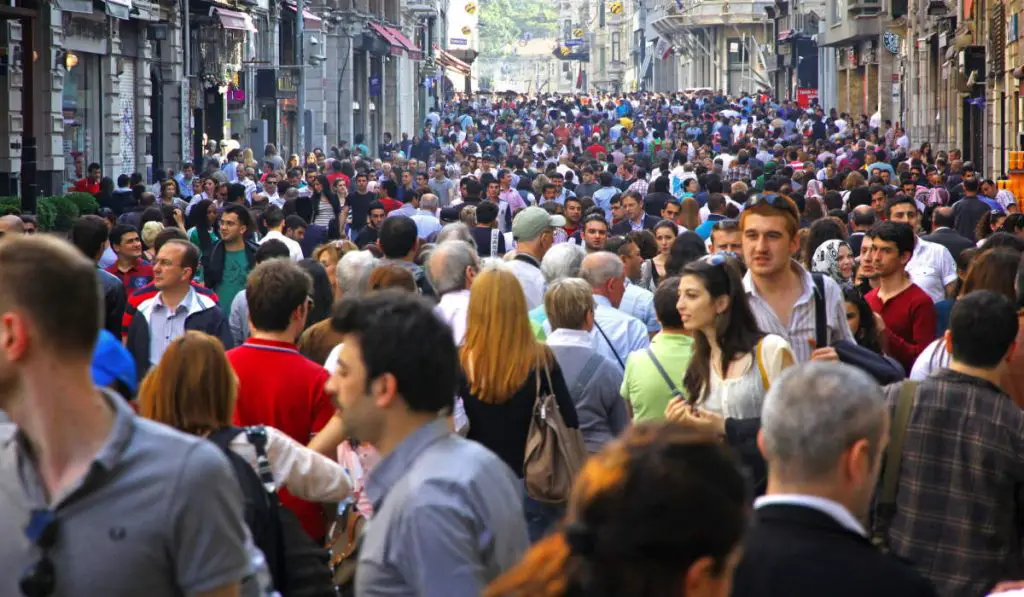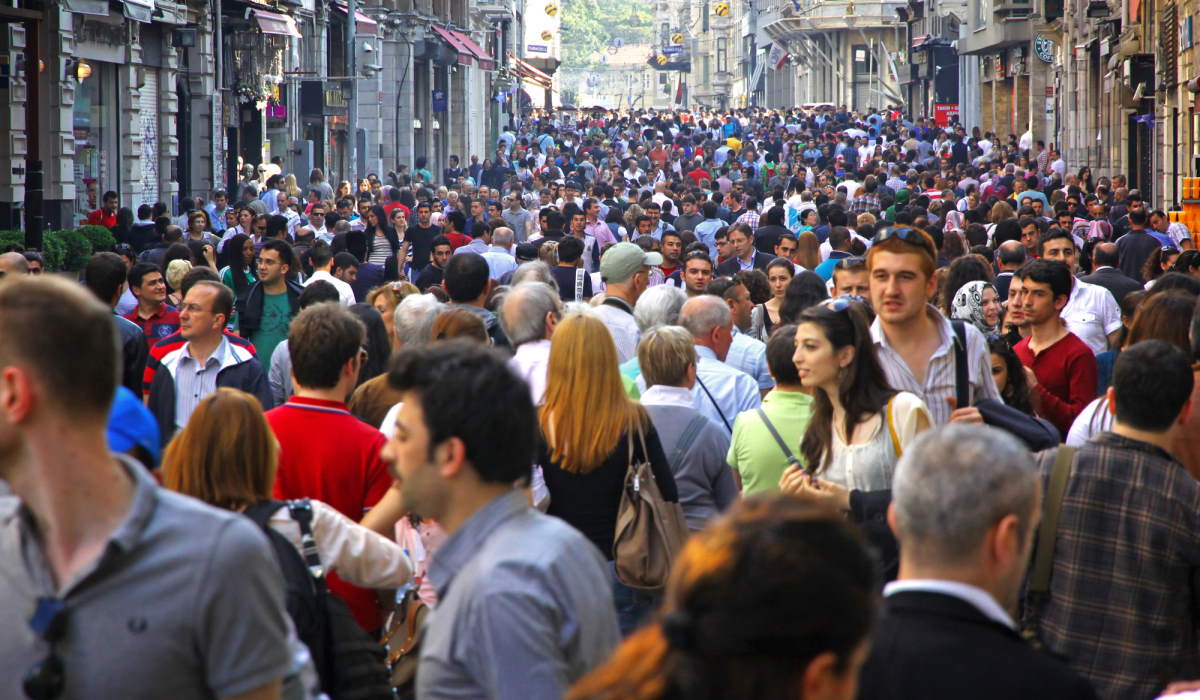It is difficult to determine an exact optimum human population for the earth, as there are many factors to consider and different perspectives on what constitutes an ideal population size. The earth’s carrying capacity, or the maximum number of people that the earth’s resources can sustainably support, is determined by a variety of factors, including the availability of resources such as food, water, and energy; the impact of human activities on the environment; and the level of technological development.
Some experts have estimated that the earth’s carrying capacity for humans is around 7-9 billion people, while others have suggested that it could be much higher or lower, depending on a variety of factors. It is important to note that the earth’s carrying capacity is not fixed and can change over time as resources become more or less abundant and as technological and societal developments occur.
Today, Earth’s carrying capacity is many orders of magnitude greater than it was when humanity began our journey on this planet. For example, it took six times as much farmland to feed a single person 9,000 years ago, at the dawn of the Neolithic revolution, than it does today. Thanks to the technological development in farming, now we use the land way more efficiently.
In addition to the earth’s carrying capacity, it is also important to consider the quality of life of the people living on the earth. A population that is too large could put a strain on resources and lead to environmental degradation, while a population that is too small could limit the ability of societies to innovate and thrive. It is important to find a balance that allows for a good quality of life for all people while also being sustainable for the planet.
On November 15, 2022, the Earth’s population hit 8 billion people. Most scientists think this number is way too big for a sustainable future.

So, what is the optimum human population for planet Earth?
There are a few studies that suggest different optimum human populations for the planet Earth.
- In the study titled “Optimum human population size” (see sources 2), scientists Gretchen C. Daily, Anne H. Erlich, and Paul R. Erlich calculated the optimal population size in the vicinity of 1.5 – 2 billion people. They took into consideration sufficient wealth, access to resources, universal human rights, preservation of biodiversity and cultural diversity, and support for intellectual, artistic, and technological creativity. They also estimated the amount of energy to satisfy these human needs while keeping ecosystems and resources intact.
- Another study, titled “Natural Resources and an Optimum Human Population” (see sources 3) estimated optimal population size based on the minimal land needed for food production (0.5 hectares per person) and soil conservation. Researchers concluded that the optimum number for the human population is 3 billion people.
- A 2010 study titled “Will Limited Land, Water, and Energy Control Human Population Numbers in the Future?” (see sources 4) suggests only 2 billion people is the appropriate size of the human population on Earth. Researchers based this number on European living standards and the sustainable use of natural resources.
- In a 2015 article titled “Sustainable welfare and optimum population size” (see sources 5), Lianos and Pseiridis suggested if we want to keep a comfortable European average per capita GWP level ($11.000), we should reduce our population to 3.1 billion.
In summary, most scientists think that the optimum human population on Earth is around 2-3 billion people.
Sources
- What is the optimal, sustainable population size of Humans? on The Overpopulation Project website
- Daily, G. C., Ehrlich, A. H. & Ehrlich, P. R. Optimum human population size. Popul. Environ. A J. Interdiscip. Stud. 15, 469–475 (1994). (pdf)
- Pimentel, D., Harman, R., Pacenza, M., Pecarsky, J. & Pimentel, M. Pimentel, David, Natural Resources and an Optimum Human Population. Popul. Environ. 15, 347–369 (1994). (JStor link)
- Pimentel, D. et al. Will Limited Land, Water, and Energy Control Human Population Numbers in the Future? Hum. Ecol. 38, 599–611 (2010). (Research Gate)
- Lianos, T. P. & Pseiridis, A. Sustainable welfare and optimum population size. Environ. Dev. Sustain. 18, 1679–1699 (2016). (Springer Link)
- Moon Landings: All-Time List [1966-2025] - February 2, 2025
- What Is Max-Q and Why Is It Important During Rocket Launches? - January 16, 2025
- Top 10 Tallest Rockets Ever Launched [2025 Update] - January 16, 2025

